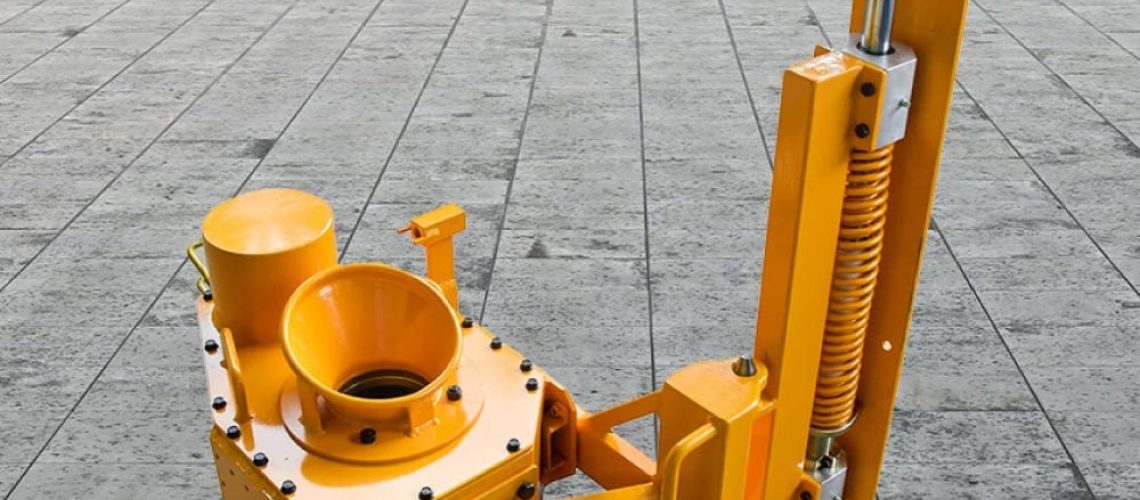Drilling is one of the most vital aspects across various industries—from oil and gas exploration to mining. One component that often receives little attention but is extremely important in the drilling process is the rod spinner.
In the drilling industry, efficiency and safety are paramount. With increasing demand for natural resources and the exploration of new wells, drilling technology continues to evolve. The rod spinner emerges as a solution to enhance drilling equipment performance, ensuring that the drilling process runs smoothly and effectively.
What Is a Rod Spinner?
Definition
A rod spinner is a mechanical device used to rotate the drill rod (pipe) during the drilling process. It functions by reducing rotational resistance and increasing the spinning speed, thereby allowing the drilling process to be carried out more efficiently. In essence, the rod spinner acts as a “driving engine” that provides extra momentum to the drilling system.
Main Components
A rod spinner consists of several key components, including:
- Rotor: The rotating part that generates momentum.
- Stator: The static part that helps stabilize the rotation.
- Bearing: A component that reduces friction between the rotor and stator.
- Drive System: The mechanism that controls the rotational speed and torque.
All these components work synergistically to deliver optimal performance during the drilling process.
Operating Principles of the Rod Spinner
Rotational Mechanism
The primary operating principle of the rod spinner is to produce stable and efficient rotation. By employing an advanced rotational mechanism, the rod spinner is capable of turning the drill rod at high speeds, thereby reducing downtime and boosting productivity. Imagine the rod spinner as a kitchen mixer that thoroughly blends ingredients without any hindrance.
Drilling Technique
In the context of drilling, the techniques used alongside the rod spinner are critical. The rod spinner helps optimize the drilling technique by ensuring that the rotation occurs consistently and in a controlled manner. This not only enhances the drilling speed but also ensures that the drilled well maintains better structural integrity.
The Role of the Rod Spinner in the Drilling Process
Impact on Drilling Efficiency
Using a rod spinner significantly increases the efficiency of the drilling process. By minimizing friction and maximizing rotational speed, it allows drilling operations to be executed more rapidly and energy-efficiently. This is particularly crucial in industries that prioritize speed and precision, such as oil and gas well drilling.
Safety and Performance
Beyond efficiency, the rod spinner also contributes to improved workplace safety. By ensuring that the drill rod rotates steadily, the risk of damage or accidents is minimized. Modern control systems integrated into rod spinners are equipped with safety features that can detect irregularities and halt operations if necessary.
Advantages of Using a Rod Spinner
Increased Drilling Speed
One of the primary advantages of the rod spinner is its ability to boost drilling speed. By efficiently rotating the drill rod, the drilling process becomes faster and more productive. This offers significant economic benefits, especially for companies that depend on high production volumes.
Reduced Friction
Rod spinners are designed to minimize friction among components during drilling. This reduction in friction not only extends the lifespan of drilling equipment but also decreases energy consumption. Simply put, think of the rod spinner as oil that lubricates the machine, ensuring that all parts move more smoothly.
Applications in Various Industries
- Oil and Gas Industry: In this sector, rod spinners play a crucial role. Drilling oil wells requires high speed and efficiency, and the rod spinner helps maintain the stability of the drill rod’s rotation while optimizing the oil extraction process. This technology minimizes downtime and reduces the risk of workplace accidents.
- Mining Industry: Equally important is the use of rod spinners in mining. Drilling in mining operations demands speed and precision to access hidden mineral resources within the earth. With a rod spinner, the drilling process is faster and more efficient, thereby increasing mining productivity.
- Other Applications: Beyond oil, gas, and mining, rod spinners are also used in sectors like construction and infrastructure. For instance, in drilling foundations for high-rise buildings or civil engineering projects, employing a rod spinner can help ensure that the drilling process is smooth and uninterrupted.
Installation and Operational Procedures of the Rod Spinner
Installation Steps
Installing a rod spinner requires careful planning and technical precision. Some basic installation steps include:
- Component Inspection: Ensure that all rod spinner components are in good condition and meet the required specifications.
- Assembly: Assemble the rod spinner parts according to the provided technical guidelines.
- Initial Testing: Conduct trial runs to ensure that the rod spinner operates stably before full-scale operation.
These steps are essential to guarantee that the rod spinner is correctly installed and ready for field use.
Standard Operating Procedures
After installation, the rod spinner must be operated in accordance with established standard procedures. These include:
- Speed Adjustment: Adjust the rotational speed according to the drilling conditions.
- Real-Time Monitoring: Use sensors and control systems to monitor the performance of the rod spinner.
- Dynamic Adjustments: Make periodic adjustments to accommodate changes in field conditions.
Adhering to these operational procedures ensures optimal performance and prevents potential equipment damage.
Maintenance and Upkeep of the Rod Spinner
Maintenance Schedule
Routine maintenance of the rod spinner is essential. A regular maintenance schedule may include:
- Visual Inspections: Conduct regular inspections to detect signs of wear or damage.
- Component Replacement: Replace bearings and other worn-out parts periodically.
- System Calibration: Ensure that the control system is accurately calibrated to maintain stable operation.
Following a structured maintenance schedule enables the rod spinner to operate optimally and extends its service life.
Maintenance Tips
Here are some useful maintenance tips:
- Regular Lubrication: Ensure that all moving parts receive adequate lubrication to reduce friction.
- Periodic Cleaning: Clean components from dirt and dust that could interfere with performance.
- Sensor Checks: Regularly check that sensors and control systems are in proper working condition to detect any anomalies early.
These tips help maintain the performance of the rod spinner and reduce the risk of operational failures.
Conclusion
The rod spinner is a vital component in the drilling process, playing a key role in enhancing both operational efficiency and safety. By rotating the drill rod steadily and quickly, the rod spinner not only accelerates the drilling process but also minimizes friction between components, contributing to energy savings and extending equipment lifespan.
The implementation of this technology across various sectors, such as oil, gas, and mining, underscores its importance in ensuring the structural integrity of wells and maintaining workplace safety. Moreover, proper installation, operation, and maintenance procedures are crucial to achieving optimal performance, making the rod spinner the primary solution for boosting productivity and efficiency in the drilling industry.



